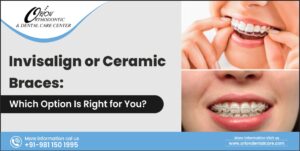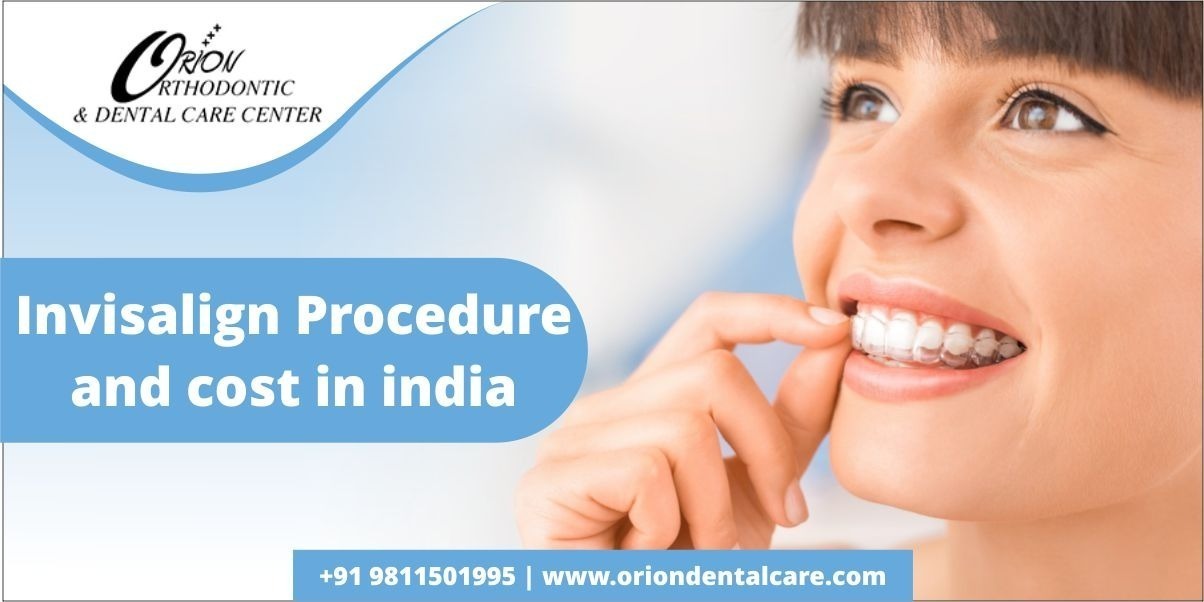Invisalign aligners are the most aesthetic way to straighten your teeth without that metallic look. But at times, these aligners themselves are not enough to carry on the required movement and the doctor may recommend you to go for, what we call Invisalign attachments. These attachments aid the aligners to treat more complex movements of the teeth. Invisalign attachments are basically tooth-colored ‘bumps’ that are attached to the teeth, allowing aligners to grip the teeth while guiding the movement of the teeth. Although they may be slightly visible, still you can enjoy the most comfortable and aesthetic orthodontic technique to get your beautiful smile.
We are here to walk you through the details about them, the Invisalign attachment types, why and when do you need them, their procedure, and how they can benefit you.
Table of Contents
Feel free to skip ahead if one topic catches your eye:
1. What are Invisalign attachments?
3. What is Invisalign Attachments Procedure?
1. What are Invisalign attachments?
Invisalign attachments are small points, or button-like tooth-colored structures, which are attached directly to your teeth. These attachments provide extra grip or pressure for problematic teeth. They are bonded via composite resin and can be of various shapes like round, triangle, square, etc. The specific shape will depend upon the type of tooth movement needed. The aligner attachments are of various types like bumps, buttons, engagers, etc. and each type is used for specific purposes. There may be Invisalign attachments on back teeth or front teeth depending on the needs and your orthodontist may use a combination of attachments to achieve the needed tooth movement in the desired direction.
2. When do you need it?
At times when Invisalign aligners alone are not enough to guide the teeth to the desired location and manner, that’s where the Invisalign attachments are needed. The aligners grip the attachments like handles to get the needed tooth movement. Conditions, where they may be used are when:
- More complex tooth movements are required in their form and orientation like when a tooth needs to be raised out within the gums(Extrusion), or pushed inside(Intrusion) or needs rotation.
- You have severe crookedness and crowding of your teeth.
- There exists severe overbite( too much overlapping of the upper teeth on the lower ones) and teeth need to be aligned accordingly.
- Aligners need anchoring, to stay in place on the teeth.
- Aligners need to be directed more effectively and precisely towards the tooth.
- Your tooth is shaped in a different way or angled at a certain angle and extra support is required to facilitate its proper movement.
3. What is Invisalign Attachments Procedure?
The Invisalign attachments are put to the center of the tooth that needs particular adjustments. Various steps to put Invisalign attachments, by your orthodontist are:
- The dentist will apply a special gel on the teeth which aids in the attachments to stick properly.
- After some time, they will remove this gel and rinse your teeth.
- Then, they will apply a small amount of bonding agent through a brush to secure the attachment onto the teeth.
- After this, the aligner template is used, which has small spaces to put the attachment material.
- The attachment material (composite resin) is placed into these spaces and put over your teeth with gentle pressure, to help the attachments adhere properly.
- A special light from a gun is then used to harden the material.
- Finally, the aligner template is removed and all extra resin material is carefully shaved off.
After all the attachments are placed, the dentist will demonstrate how to put and take off your aligner.

4. Recovery and Maintenance.
- After the attachments have been put in, usually there is no pain, but you may feel a little discomfort for the first few days, because the aligners may feel more snugly fit.
- You might take a few days to adjust to the attachments and the new force of the aligners, therefore, you may have sore cheeks, gums, and lips, which are temporary and will resolve on their own. Pain medications and gels may also be used as recommended by your dentist.
- Sometimes the attachment may irritate a particular spot inside the mouth, which can be relieved by placing some orthodontic wax on that spot.
- Some mild irritation and pain are an indication that your treatment is working, and as soon as you get used to it, the discomfort will subside.
- Visit your orthodontist regularly and strictly follow their instructions.
If pain persists for more than a week and increases, do not ignore it and immediately seek your dentist’s help.
5. FAQs
1. What are some of the Invisalign attachments benefits?
- Provides a better grip on the teeth.
- Allows the Invisalign option for people with severe malocclusion.
- Can adhere to any tooth surface.
- Being durable and strong stays for a long time.
2. Does the Invisalign attachments affect brushing?
Yes, it may make your brushing and flossing a little difficult as they create more surface area for food particles and debris collection. But if you spend a little more time on proper brushing and flossing, you can maintain very good oral hygiene.
3. When do Invisalign attachment stain?
Your food and oral hygiene habits will affect the staining of the Invisalign attachments. Hard and acidic drinks, tobacco, coffee, tea, too many colored foods like beetroot, etc. and not properly rinsing and cleaning after eating may cause your attachments to stain.
4. How and when is the Invisalign attachment removal done?
After the treatment is over, your dentist will remove your Invisalign attachment with a tool that will chip away the attachment.
5. How will I know that I need Invisalign attachments?
Your orthodontist, after thorough assessment will inform you before the start of treatment whether or not you may need them.
Takeaway
Orion orthodontic and dental care centre is considered one of the best dental clinics in Delhi NCR which is a one stop solution for all your dental problems. The highly experienced and skilled doctors and staff ensure best and customized solutions in accordance to your needs. The latest and modern technology and equipment are used for best results, maximum comfort and minimal side effects. The strict norms for hygiene and infection control provides a safe environment for you.
Come and experience the outstanding services offered by Orion orthodontic and dental clinic at pocket friendly costs.




